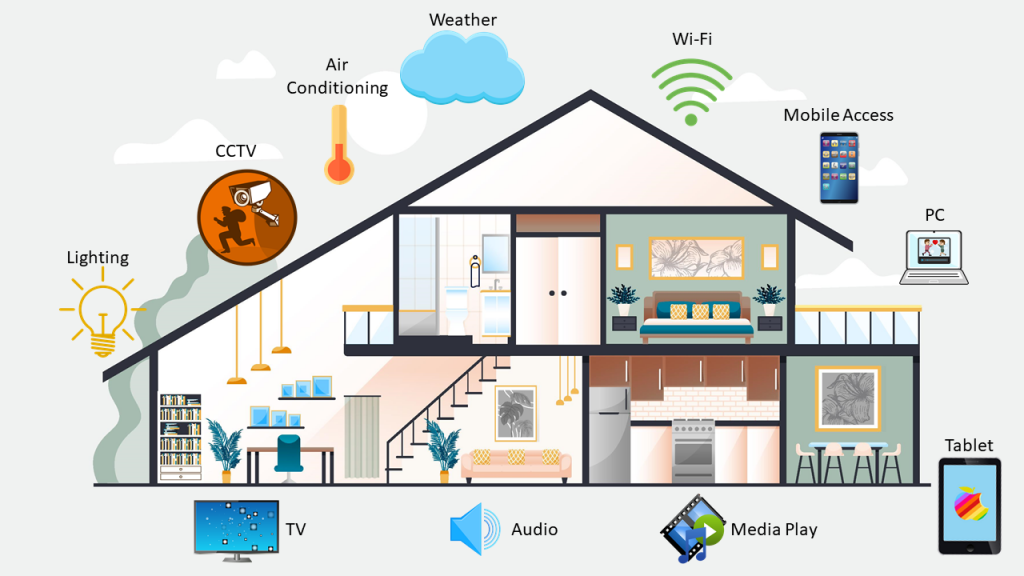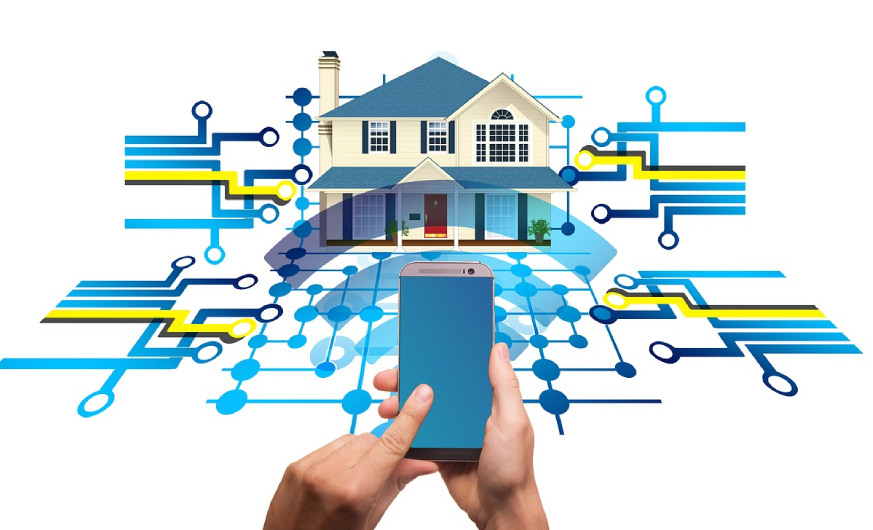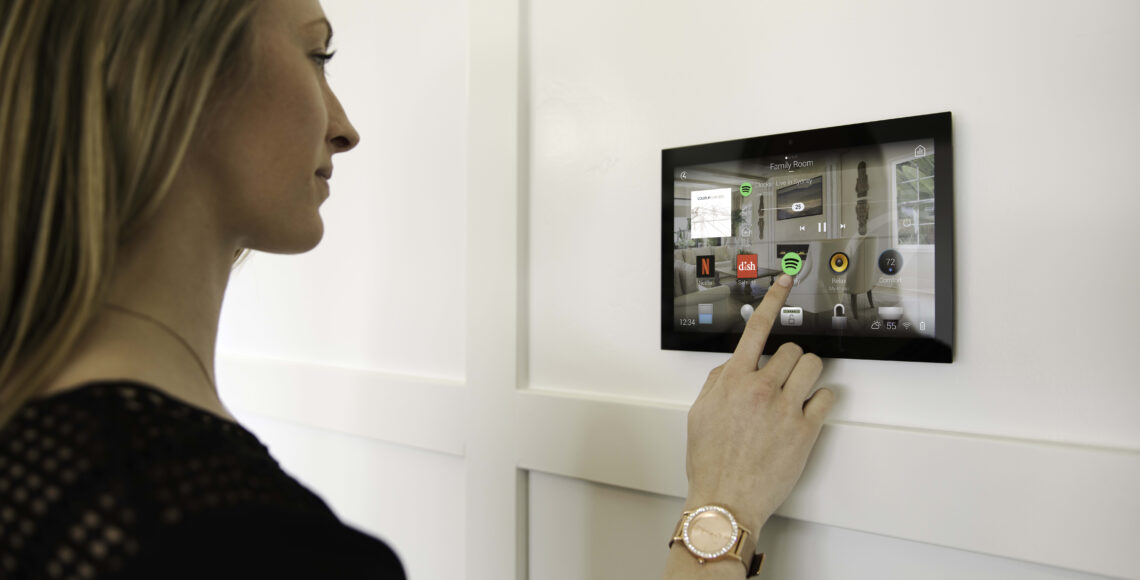Why should every new construction or gut reno include wiring infrastructure for Smart Home?
Modern homes are incorporating smart home technology into every corner and cranny, from appliances to lighting to blinds to thermostats. These gadgets improve the functionality and efficiency of our homes in many ways, but they also clutter up home networks’ bandwidth and slow everything down.
Smart TVs, gaming consoles, computers, tablets, smartphones, and smartwatches are just a few of the connected gadgets competing for network bandwidth in today’s households, even those without a single smart home device. The issue will only worsen if smart home gadget adoption among consumers, which is expanding quickly and consumes even more bandwidth, is taken into account.
If you’re a homebuilder, an architect, interior designer, homeowner, or installer working on new home construction or renovation projects, it’s now critically important to plan for the future needs of tomorrow’s smart homes.

Structured wiring will pave the way for the future.
Every room in a house, or just a few, can have structured wiring installed, which can then be terminated with a choice of wall plates and ports for quick plug-and-play network connections. This makes it possible for homeowners to directly connect more of their gadgets to high-bandwidth cable, such as fiber optic lines. Also, it lessens the load on the Wi-Fi network, which can otherwise become overwhelmed.
It goes without saying that structured wiring is easiest to install during new construction, when the walls are open. Taking the time and care to include structured wiring in a new home’s plans can have a tangible impact on its appreciation and resale value. It can also save the home’s future owners from taking on an expensive (and likely inevitable) retrofit to add structured wiring later on.
Working From Home
Consider the effects of the Coronavirus pandemic on the world over the past three years. Working from home and the ongoing transition to “hybrid” work have increased the demands on our houses’ technical infrastructure.
Any home might understandably find its technology creaking when the demands of people working on Zoom or Teams, HD movies and music are all being streamed whilst social media is being browsed, but that’s become the norm for most of us.
Sound, Shades, and Light
Music streaming and automated shades are other applications that benefit greatly from structured wiring. While music streaming can be done wirelessly, having wired speakers allows for less obtrusive equipment while having a better quality sound and a more reliable experience. Wired speakers will provide you with more options to choose from and they deliver a deeper, richer sound because there’s no compression required during data transmission.
By the same token, low-voltage-wired automated shades have cleaner connections, safer communication, and more design options for hardware and controls than their wireless counterparts. Low-voltage-wired shades can also accommodate larger window applications and there’s no need to replace batteries or recharge them occasionally. Their motors tend to be quieter and multiple blinds can function in a symmetrical fashion, allowing them to raise and lower together in perfect symmetry.
Lighting is another area where pre-planning and pre-wiring can help in creating a better experience for the homeowners. Most houses tend to have multiple light loads in various rooms. Having multiple switches present on the wall is both an eyesore and can be confusing to use. For many modern houses, the better solution is to wire all the dimmers and switches in a central utility room or closet and distribute wired keypad controls that are custom engraved and usually backlit in the various rooms. This setup contributes to a cleaner, more modern, and more intuitive experience.
When it comes to how you’d like to operate the lights, sound and TVs or cinema system: I can pretty much guarantee that you won’t want to have your beautiful home cluttered with a myriad of remote controls. A truly smart home will also have a smart solution for automation and, for Theautom8group, we are advocates of Control4 and their simple-to-use yet powerful multi-application remote controls.
Getting it Right
It’s not just getting the network right that’s the biggest concern for people constructing their new home. So often we hear people say that “they wish they or their architect had planned ahead and given real thought to how each space in the house would be used in terms of technology and smart home automation.” Ironically, organized wiring—a practice that dates back decades—is essential to the development of linked smart houses. It’s time to start designing for the requirements of tomorrow’s smart homes, whether you work as an architect, home builder, interior designer, or a homeowner working from home. Those who ignore these trends may soon find themselves scurrying to change course and catch up to businesses that become market leaders in future-proofing smart homes.
A new-build smart home may be a genuinely smart, completely automated, truly beautiful house from the day you move in and for many happy years ahead with proper planning and setting up the network correctly from the beginning.

Want to know more? Call us at 866.815.0099 or email info@theautom8group.com.


